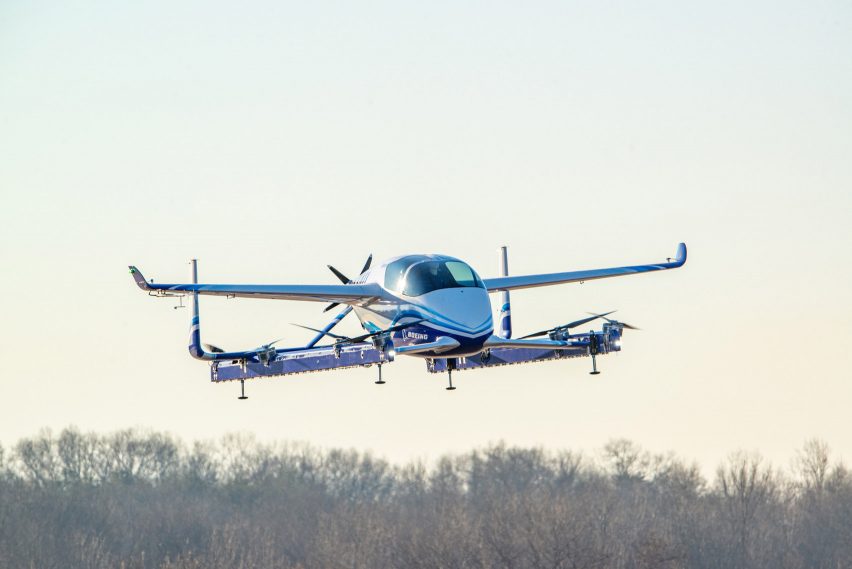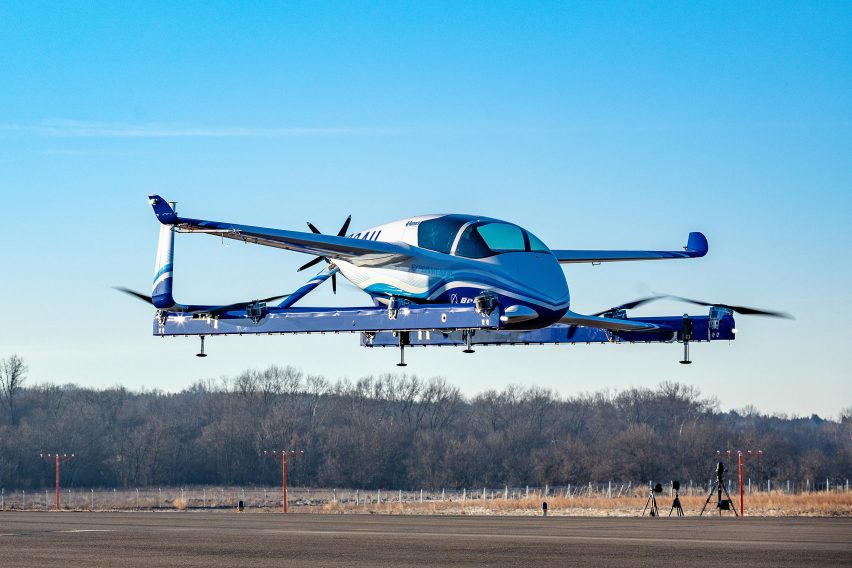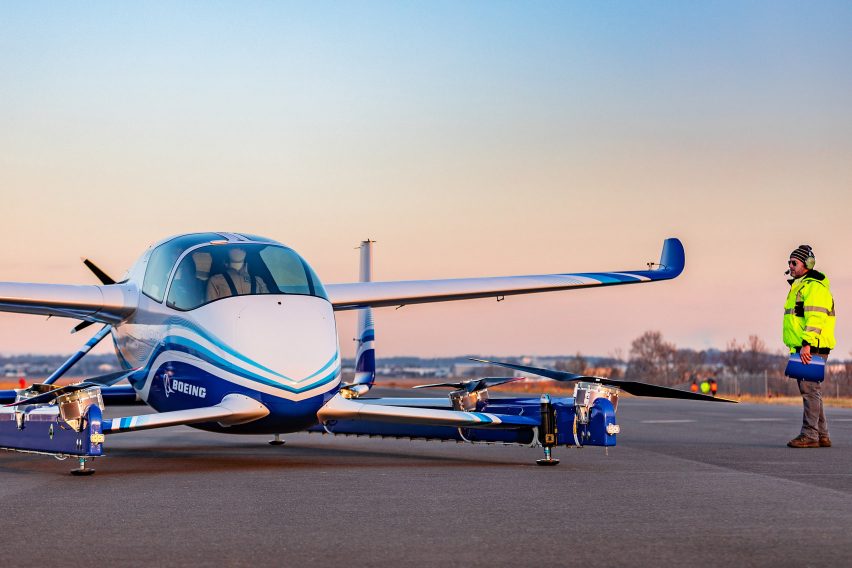Boeing's self-piloted passenger drone completes first test flight
Boeing has tested a prototype of its electric autonomous passenger drone — a vehicle that a year ago was just a concept design.
The US aerospace company tested the experimental aircraft, which it is calling a passenger air vehicle (PAV), last week in Manassas, Virginia.
The prototype is an example of an electric vertical takeoff and landing (EVTOL) aircraft, which are often referred to as flying cars, one of the first to make it from the drawing board to the skies.

Boeing developed the PAV through its subsidiary Aurora Flight Sciences, which is among several companies to have partnered with Uber to realise the ride-sharing company's vision for flying taxis.
In last week's test flight, the prototype completed a controlled takeoff and hovered for a few seconds before landing.
Boeing NeXt, the company's urban air mobility division, says that it will test forward flight as well as the crucial transition from vertical to forward flying — "the most significant engineering challenge for any high-speed VTOL aircraft" — in the future.

"In one year, we have progressed from a conceptual design to a flying prototype," said Boeing chief technology officer Greg Hyslop. "We will continue to lead with a safe, innovative and responsible approach to new mobility solutions."
EVTOL vehicles are considered by some to be the future of urban mobility, with their vertical takeoff and landing feature theoretically enabling door-to-door transport.

Rival Airbus tested its version of the PAV, known as Vahana, at the start of 2018, and German start-up Lilium reached the milestone a few months earlier.
British aerospace company Rolls-Royce has its own eVTOL vehicle in development, while Uber has been perhaps the most ardent pursuer of the flying-car dream, revealing concepts for skyports and taxis, and partnering with NASA.
EVTOL aircraft are often dubbed "flying cars" because they would carry a similar number of passengers as a car and cover similar sorts of journeys, while they earn the moniker "passenger drones" for borrowing their propeller-driven style of flight.
Boeing's PAV measures 9.14 metres long and 8.53 metres wide. It is powered by an electric propulsion system and has a range of up to 50 miles (80.47 kilometres).
While the PAV was under human control in last week's test flight, it is designed to operate fully autonomously.
"This is what revolution looks like, and it's because of autonomy," said John Langford, president and chief executive officer of Aurora Flight Sciences. "Certifiable autonomy is going to make quiet, clean and safe urban air mobility possible."
Boeing has been designing and manufacturing aircraft for 102 years, since 1916. The company's NeXt division is dedicated to experimental technologies, and is currently focusing on autonomous flight and advanced propulsion.
Among its other projects is an unmanned cargo drone that can carry loads of up to 227 kilograms. This was tested indoors last year and will move to outdoor testing in 2019.